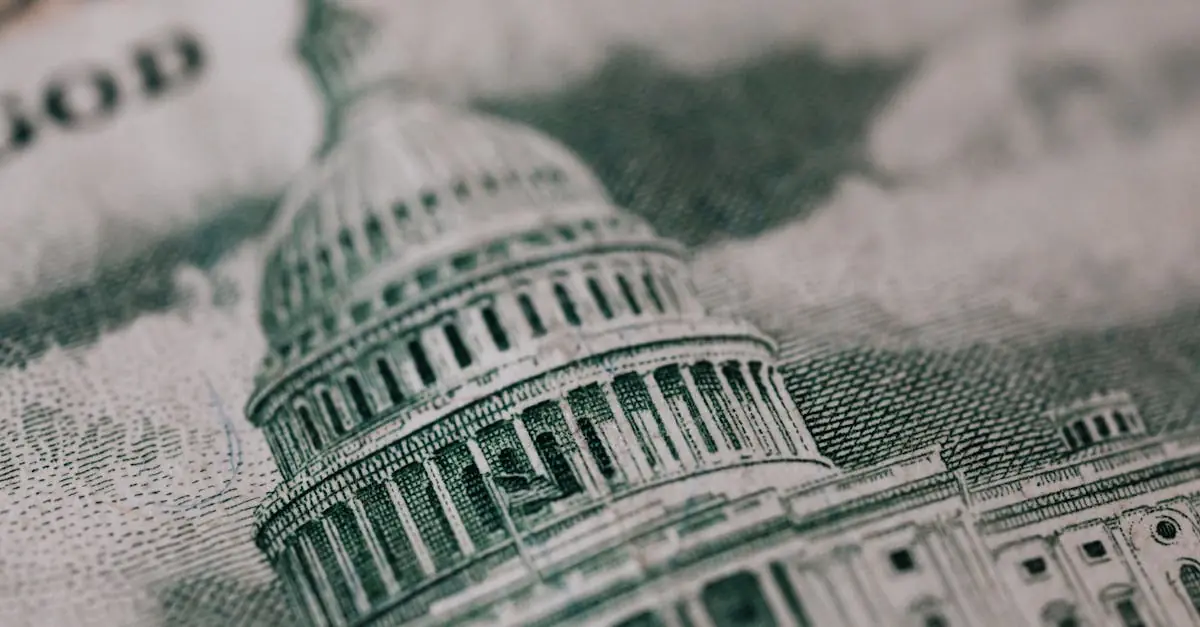In a world where wealth often speaks louder than words, the clash between new money and old money styles is nothing short of a fashion showdown. Picture this: on one side, the flashy, trendsetting newcomers flaunting designer labels and Instagram-ready ensembles. On the other, the understated elegance of old money, where subtlety reigns and timeless pieces whisper sophistication.
But what does it really mean to embody these two distinct styles? Is it all about the price tag or the heritage behind it? As they navigate the social landscape, both camps have their quirks and charms. Buckle up as we dive into the delightful nuances of new money versus old money style, exploring how these two worlds collide and what they reveal about our ever-evolving relationship with wealth and fashion.
Table of Contents
ToggleOverview of Money Styles
New money and old money represent distinct styles in fashion and societal expression. New money indicates recent wealth amassed through entrepreneurship, technology, or entertainment. Trend-driven choices characterize this style, showcasing flashy designer labels and attention-grabbing outfits. Bright colors, bold patterns, and statement accessories often make appearances in their wardrobes.
Old money, conversely, signifies historically accumulated wealth typically passed down through generations. This style emphasizes understated elegance and timeless sophistication. Classic cuts, fine fabrics, and muted color palettes dominate the wardrobe of those embodying old money. Items chosen convey heritage and tradition rather than ostentation.
Cultural implications arise from these contrasting styles. Wealth perception influences how individuals dress, dictating social interactions. New money individuals may seek validation through their fashion choices, whereas old money individuals embody confidence without the need for external affirmation.
Price and heritage play significant roles in defining these styles. New money often prioritizes high-cost items from trending brands, while old money favors enduring quality and craftsmanship over price tags. Balancing flashiness with tradition highlights the ongoing conversation surrounding the intersection of wealth and fashion.
Social contexts further shape these styles. Events attended differ significantly; new money may gravitate toward exclusive parties and celebrity gatherings. Alternatively, old money individuals might prefer traditional gatherings such as charitable balls or family events. Recognizing these differences can offer insights into broader societal values tied to wealth and status.
Characteristics of Old Money Style
Old money style embodies traditions, grace, and subtlety rather than ostentation. Individuals who align with this aesthetic cultivate an air of exclusivity through their fashion and social engagements.
Key Attributes
Classic pieces define the old money look. Tailored suits, timeless dresses, and well-fitted coats in neutral hues often dominate wardrobes. Quality takes precedence over quantity. Materials such as cashmere, silk, and fine wool enhance the understated elegance. Accessories remain minimal yet sophisticated, often featuring subtle insignias or luxurious textures. Heritage brands that emphasize craftsmanship, like Burberry and Brooks Brothers, represent preferred choices.
Fashion and Lifestyle Choices
Old money individuals prioritize functionality alongside style. Simplicity guides their daily wear, often resulting in a signature look that’s both polished and effortless. Luxury manifests in experiences rather than flashy items, focusing on exclusive resorts, private clubs, and cultural events. Social settings reflect discretion; gatherings often center around traditional values and philanthropy. Their lifestyle choices extend beyond fashion, emphasizing sustainability and authenticity through a legacy of quality.
Characteristics of New Money Style
New money style showcases contemporary expressions of wealth. Individuals with new money prefer trends that grab attention and reflect their success.
Key Attributes
Boldness defines new money fashion. Bright colors and eye-catching patterns dominate wardrobes. Designer labels serve as status symbols, often prominently displayed. Quantity supersedes quality, as constant updates cater to the latest trends. Customization and personalization of pieces are common, emphasizing individuality and creativity. This style reflects immediacy and the desire for visibility in social contexts.
Fashion and Lifestyle Choices
Frequent attendance at high-profile events marks the new money lifestyle. Exclusive parties and celebrity gatherings offer ideal platforms for showcasing fashion statements. Luxury brands play a crucial role, as individuals seek out the latest trending products. Social media serves as a primary outlet for showcasing new acquisitions and lifestyle choices. Experience-driven vacations and lavish outings exemplify this approach to luxury. Moreover, collaborations with popular influencers often enhance visibility and appeal.
Comparing New Money and Old Money Style
New money and old money styles generate distinct social perceptions and stereotypes that influence fashion culture. New money individuals often face scrutiny, with some viewing their flashy style as ostentatious or lacking refinement. Many consider them to embody a self-made ethos, valuing creativity and individuality. Old money, on the other hand, garners respect for its lineage, often symbolizing tradition and stability. Society frequently associates old money with sophistication, leading to a stereotype of aloofness or elitism. Both groups navigate a complex landscape where these stereotypes shape their identities and interactions, creating a nuanced dialogue around wealth and appearance.
Social Perceptions and Stereotypes
Social perceptions about new money focus on flashy expressions of wealth, often associated with egocentrism. Critics might label this style as superficial, emphasizing extravagance over quality. In contrast, old money exudes an air of refinement, tied to generations of inherited wealth. Many perceive old money individuals as confident and secure, avoiding the need for external validation. Such contrasts illustrate how society deems fashion choices as reflections of character, revealing deeper beliefs about what wealth represents.
Cultural Influences
Cultural influences shape distinct styles for both new money and old money. New money draws inspiration from current trends and celebrity culture. This style thrives on social media, which amplifies visibility and encourages rapid shifts in fashion. Old money leans into classic traditions and timeless designs, often inspired by history or art. Appreciating craftsmanship comes to the forefront, influencing material choices and silhouettes. Heritage plays a crucial role for old money individuals, as it reinforces their commitment to sustainable luxury. Differences in cultural influences highlight how both groups express their wealth and identities uniquely.
Examples in Popular Culture
Movies and television often illustrate the distinct styles of new money and old money. Characters in “The Great Gatsby” epitomize old money elegance, showcasing timeless fashion, classic suits, and understated accessories. At the same time, the vibrant wardrobe of characters from “Crazy Rich Asians” epitomizes new money exuberance, filled with bold colors and designer labels.
Fashion designers regularly reflect these two styles in their collections. Ralph Lauren represents old money with refined, classic pieces that celebrate craftsmanship and tradition. In contrast, Balenciaga embraces new money’s trend-driven approach, favoring avant-garde designs and statement fashion.
Reality television highlights the differences as well. The cast of “Real Housewives” franchises often embodies the flashy style of new money, featuring elaborate outfits and extravagant lifestyle displays. Alternatively, series like “Downton Abbey” highlight old money’s sophistication, with characters sporting heirloom pieces and timeless silhouettes.
Literature also showcases these contrasting styles. In “The Talented Mr. Ripley,” wealthy characters indulge in luxury brands, defining their new money status. Old money is represented by characters in works like “Pride and Prejudice,” where fashion choices subtly communicate their social standing and taste.
Art and music illustrate these themes, too. Contemporary artists may incorporate elements of new money’s flamboyance into their work, while classic art maintains an old money aesthetic, focusing on heritage and enduring qualities. Musicians often use fashion as a means of expression; pop stars frequently embrace new money styles, whereas classical artists exude the elegance associated with old money.
These examples condition perceptions of wealth and status, shaping the public’s understanding of both styles. By observing popular culture, individuals can recognize and appreciate the nuanced distinctions between new money and old money fashion.
The distinction between new money and old money style reveals much about societal values and perceptions of wealth. New money embraces boldness and self-expression through trendy fashion choices while old money emphasizes timeless elegance and understated sophistication. Each style carries its own cultural significance and reflects deeper beliefs about identity and status.
As individuals navigate their fashion choices within these frameworks, they contribute to an ongoing dialogue about wealth and its representation. Understanding these differences not only enriches one’s perspective on fashion but also highlights the intricate relationship between style and societal norms. Ultimately, both new money and old money styles offer unique insights into how wealth shapes personal expression and social interaction.




